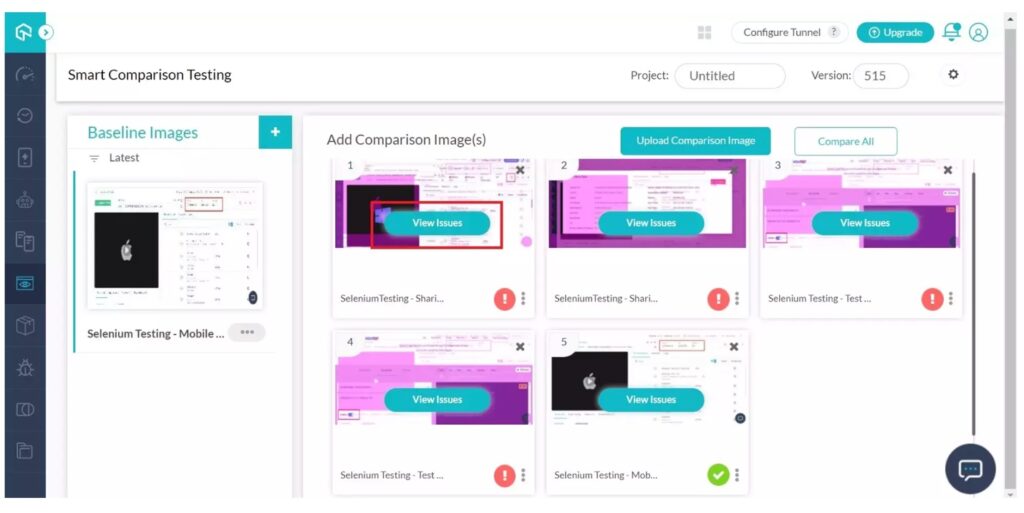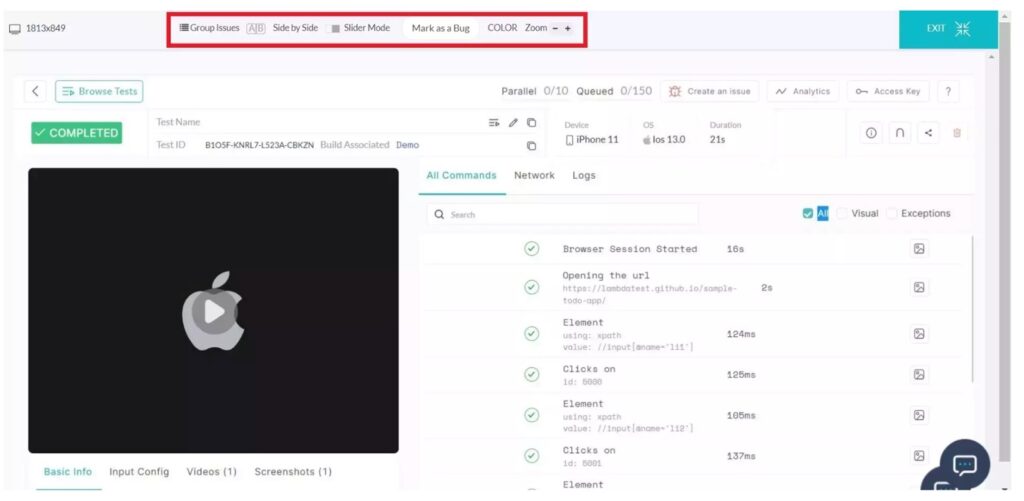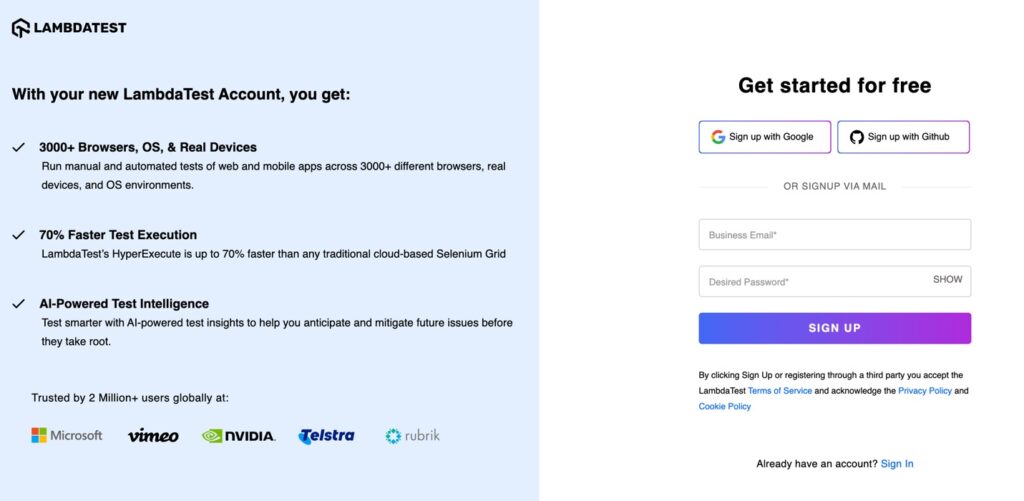The complexity of modern applications has given rise to various new testing processes. The combined goal of all these test cases is to guarantee the stability and functionality of the application that is currently undergoing the development process. Regression testing is one of the most important components of the modern app testing cycle. It becomes even more useful when the developers are working on apps that undergo a frequent updating process. Properly implementing all the modern test cases helps developers create a positive image for their brand to maintain their position in this competitive segment of the industry. There are also other ways of integrating the development and testing processes of an app company.
With this article, we will discuss some of the most efficient ways of initiating and executing regression testing on modern applications. We will also analyze some of the best tips, tricks, and practices that can help developers improve the efficiency of their regression test cases.
Evolution of the App Testing Industry
Initially, the apps were very simple as they targeted one platform and one action at a time. However as time began to progress, the customers began to value the importance of multitasking. So to keep up with this changing industry, the developers needed to create applications that could serve multiple actions at the same time. For this function, the core infrastructure of the app needs access to multiple elements at the same time which increases the complexity of the app structure. Therefore the testers started to realise the importance of implementing rigorous test cases on these apps.
Moreover, with the help of various tools, platforms, and plugins, the testers can not only improve the efficiency of the test cases but also have a critical role in improving the quality of the application undergoing the development process. Various surveys also show that quick app delivery goes a long way in creating a positive image for the company.
Exploring Regression Testing
To keep up with the evolution of end users, the developers often release updates to their app to improve its efficiency and keep it up to date according to modern standards. However, in certain scenarios, the new elements can harm the performance of the previously existing elements of the app. Due to these errors, certain elements can be non-functional, or in a worst-case scenario, the entire app can crash on use. To prevent these errors, the app testers not only have to test the functioning of the individual elements but also the combined infrastructure. These test cases are popularly known as regression testing.
Since regression testing verifies the viability of the app update, the developers must perform these test cases after every update to the core infrastructure of the application. While implementing regression testing, the application developers also have to verify the proper functioning of the user interface elements present in the app.
Ways to Perform Regression Testing
Based on our knowledge and requirements of the current market, we have created a list of some of the most efficient ways of performing regression testing:
1. Execution of Manual Regression Testing
In this process, the developers have to run a series of pre-written test cases every time there is an update to the core infrastructure of the application. As the test report arrives, the testers will compare it with a set of predetermined parameters that will help them understand the impact of the changes.
In this process, the testers can also combine exploratory testing. Using this process, the testers can execute unconventional test cases to find unexpected errors in the app’s functioning.
2. Execution of Automated Regression Testing
Using automated testing, the system can automatically trigger the test cases whenever there is a change in the core framework of the app. For this process, it will use a series of predetermined parameters for emulating human interactions while communicating with the app. The testers can also make changes in the text file to customize the report as per the app requirements.
While executing automated regression testing, the developers can also integrate other dependencies like cloud platforms to improve the accuracy and versatility of the test environment.
3. Performing Selective Regression Testing
There are multiple scenarios when the developers will work on applications that only undergo minimal changes during the updating process. In such a scenario, it is a complete waste of time and resources to execute the test cases on every element of those apps. So the app developers can initiate and conduct selective regression testing to verify the function of those elements that change. Then, they can compare them with the previous test results.
Selective regression testing also allows the testers to improve the productivity of the test environment. By integrating selective regression testing with automation testing, the developers can also boost this efficiency several times.
4. Snapshot Regression Testing
It is also known as visual regression testing. In this process, the developers have to capture screenshots of the application before implementing the updates. Then, the testers will capture screenshots after the implementation of the updates and compare them to find any discrepancies or errors. The primary motive of snapshot regression testing is to find placement errors of the visual elements and malfunctions in the UI elements of the app.


5. Maintaining Data Reusability and Test Data Management
Another way of simplifying regression testing is maintaining test data and ensuring they are reusable based on the app development standards. Using the page object model, the developers can separate the test data and ensure that they can reuse the test cases multiple times with different sets of inputs. Thus, it is one of the simplest and easiest ways of initiating regression testing on modern applications. Multiple 3rd party tools are easily available in the market that allow the developers to maintain and reuse their test data.
LambdaTest and its Effect on Modern App Testing
LambdaTest is an AI-powered test orchestration and test execution platform for initiating and executing the automation test cases. Using this platform, the developers can run the regression test cases on thousands of different real devices and browser versions at the same time. It is possible with the help of the LambdaTest real device testing cloud that runs the test cases through remote servers. Some of the major benefits of using cloud testing involve access to legacy devices and the elimination of Geolocation barriers.
Using LambdaTest actual device cloud and the LambdaTest API, the app developers can improve regression testing in the following ways:
- LambdaTest allows the developers to integrate automation testing with regression testing so that the system can run the test cases automatically 24 hours round the clock. Moreover, it uses parallel test execution to initiate thousands of different test instances on multiple configurations and machines at the same time.
- Using this platform, the developers can also run the regression test cases on legacy devices and older browser versions that are impossible to find in the market. So, the app developers can guarantee the compatibility of their app even or older hardware or software configuration.
- While using LambdaTest, the app developers can integrate Selenium WebDriver to run cross-browser testing along with regression testing. This process guarantees the stability of the app irrespective of the user’s change in operating system, browser version, or device parameters.
- LambdaTest has an extensive support system to assist all the new automation testers with its tools and features. Some of the most popular options include live chat, over-the-call support, and even a mailing feature. This platform also has an extensive community of testers and developers where they can discuss among themselves various issues and testing practices.
- The official website of LambdaTest has elaborate documentation explaining its methods and tools using simple languages and sample test cases. So the developers can go through this data to find specific methods that can be useful depending on their app project. The official website also provides elaborate information about all the common errors that can arise during regression testing and their possible solutions.
Performing Regression Testing with LambdaTest
With the integration of LambdaTest, app developers can massively simplify the process of executing automated regression testing. To simplify this process for the new testers, we have mentioned all the required steps in chronological order:
- For the new automation testers, the first step is to navigate to the official website of LambdaTest and create their account by following a few simple steps. Then they will receive all the login credentials by purchasing the license.

- Next, the developers have to install Selenium WebDriver along with the LambdaTest JavaScript package. The following code snippet will help the automation developers with the installation process:
npm install selenium-webdriver
npm install lambdatest
- Now, it is time for the developers to write their regression test cases using their preferred programming language. To simplify this process, we have mentioned a sample code for initiating regression testing with LambdaTest API.
const { Builder, By, Key, until } = require(‘selenium-webdriver’);
const LambdaTest = require(‘lambdatest’);
// Your LambdaTest credentials
const USERNAME = ‘your_username’;
const ACCESS_KEY = ‘your_access_key’;
// Desired capabilities for LambdaTest
const desiredCapabilities = {
build: ‘Regression Testing’,
name: ‘Sample Test’,
platform: ‘Windows 10’,
browserName: ‘Chrome’,
version: ‘latest’,
};
// LambdaTest tunnel configuration
const tunnelConfig = {
tunnel: true,
tunnelName: ‘MyTunnel’,
};
(async () => {
// Initialize LambdaTest
const lt = new LambdaTest(USERNAME, ACCESS_KEY, tunnelConfig);
// Start a new session on LambdaTest
const driver = new Builder()
.usingServer(lt.selenium_url)
.withCapabilities(desiredCapabilities)
.build();
try {
await driver.get(‘https://www.example.com’);
const searchInput = await driver.findElement(By.name(‘q’));
await searchInput.sendKeys(‘LambdaTest’, Key.RETURN);
await driver.wait(until.elementLocated(By.id(‘search’)), 10000);
} finally {
await driver.quit();
await lt.stop_tunnel();
}
})();
- The final step in this process is to initiate the testing phase using the run button in the terminal window. After executing the test case, LambdaTest will automatically display the test result and highlight the bugs and errors, if any.
The Conclusive Views
This article was a guide to help the new automation testers with the process of regression testing. We also briefly mentioned all the steps required in executing these test cases using cloud platforms. To properly improve the quality of the app development process, the developers must adopt automation testing practices and keep updating their knowledge about all their new trends and innovations in this segment. It is also important to constantly monitor the target audience to understand their requirements and customize their application accordingly. The developers can also benefit a lot by considering their preferences while choosing the automation testing framework. It will have a crucial role in boosting the productivity of the testing environment.